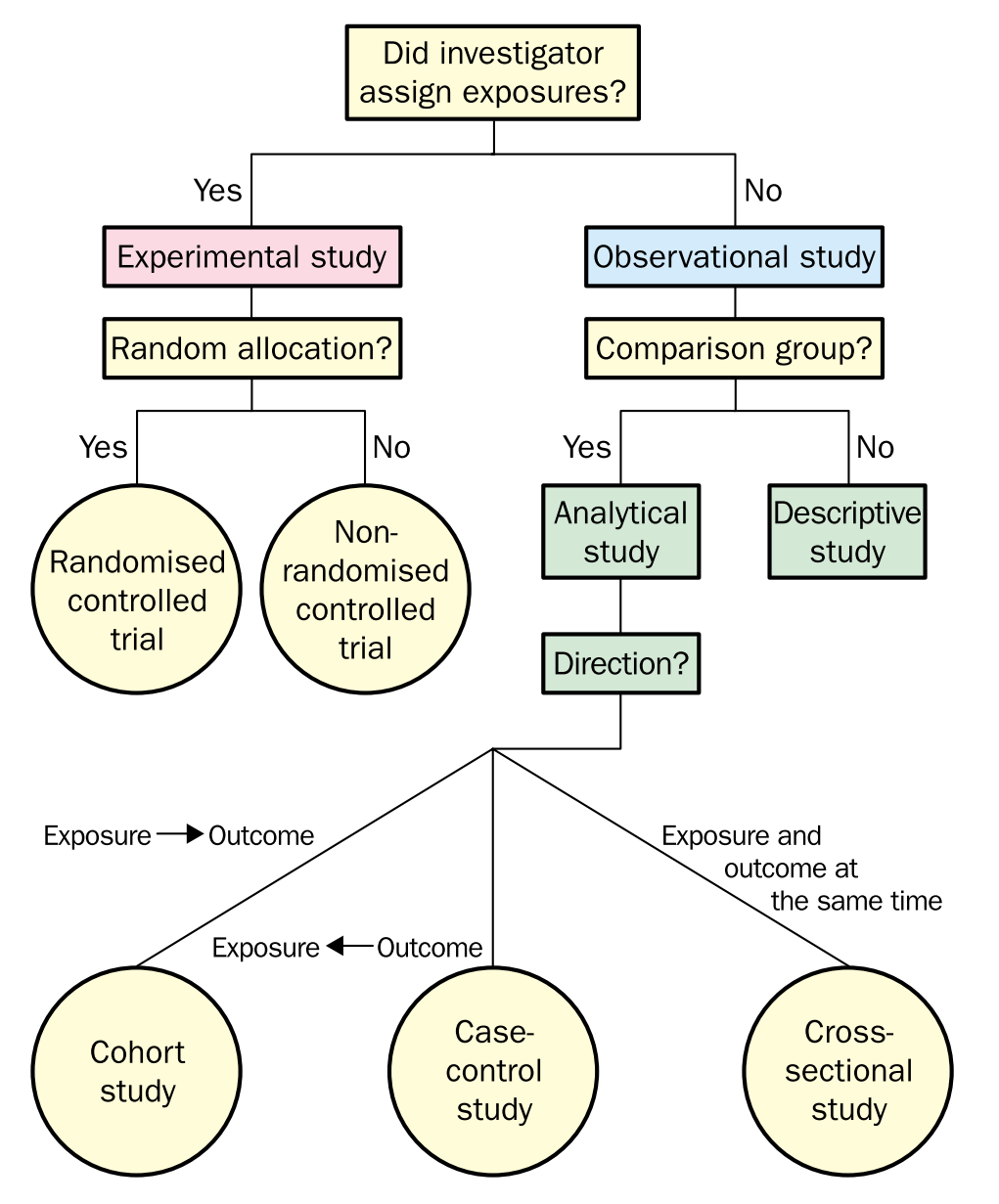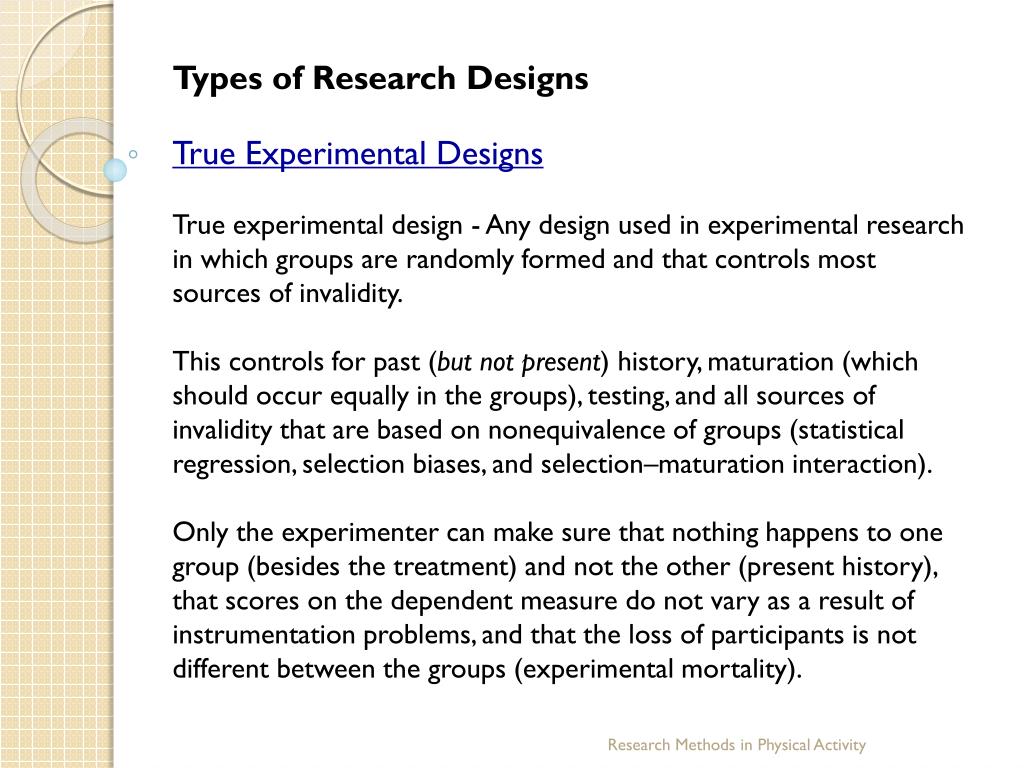Table Of Content
- Research Methods in Psychology
- Child Care and Early Education Research Connections
- What Are the Threats to Establishing Causality When Using Quasi-experimental Designs in Medical Informatics?
- Quasi-Experimental Research Design – Types, Methods
- Ethical Reasons
- Characterize fidelity and measures of implementation processes
- Workplace financial education and change in financial knowledge: A quasi-experimental approach (Horwitz et al.,

Imagine, for example, a researcher who is interested in the effectiveness of an antidrug education program on elementary school students’ attitudes toward illegal drugs. The researcher could measure the attitudes of students at a particular elementary school during one week, implement the antidrug program during the next week, and finally, measure their attitudes again the following week. The pretest-posttest design is much like a within-subjects experiment in which each participant is tested first under the control condition and then under the treatment condition. It is unlike a within-subjects experiment, however, in that the order of conditions is not counterbalanced because it typically is not possible for a participant to be tested in the treatment condition first and then in an “untreated” control condition. Quasi-experimental research designs have gained significant recognition in the scientific community due to their unique ability to study cause-and-effect relationships in real-world settings.
Research Methods in Psychology
Regression to the mean all but guarantees that their scores will be higher even if the training program has no effect. A closely related concept—and an extremely important one in psychological research—is spontaneous remission. This is the tendency for many medical and psychological problems to improve over time without any form of treatment. If one were to measure symptom severity in 100 common cold sufferers today, give them a bowl of chicken soup every day, and then measure their symptom severity again in a week, they would probably be much improved. This does not mean that the chicken soup was responsible for the improvement, however, because they would have been much improved without any treatment at all.
Child Care and Early Education Research Connections
The comparison group consisted of non-participants identified by employers and received a financial education booklet in lieu of classes. The comparison group consisted of 56 employees, 7 from Company A and 49 from Company B. The study sample was predominantly female, and a plurality of employees had incomes between $38,521 and $101,582. However, the comparison group members had a lower percentage of bachelor’s degree recipients than the program group. There are certain situations where the use of a quasi-experimental design is more suited to the study. This is especially true for studies where it would be unethical to withhold treatment from a subject on a random basis. In such situations, researchers can utilize quasi-experimental design to circumvent any ethical issues.
What Are the Threats to Establishing Causality When Using Quasi-experimental Designs in Medical Informatics?
Health systems researchers and health economists use a wide range of “quasi-experimental” approaches to estimate causal effects of health care interventions. In the present context, they are considered to use rigorous designs and methods of analysis which can enable studies to adjust for unobservable sources of confounding [6] and are identical to the union of “strong” and “weak” quasi-experiments as defined by Rockers et al. [4]. Quasi-experimental research designs are research methodologies that resemble true experiments but lack the randomized assignment of participants to groups. In a true experiment, researchers randomly assign participants to either an experimental group or a control group, allowing for a comparison of the effects of an independent variable on the dependent variable.

Quasi-Experimental Research Design – Types, Methods
This method is used to reduce bias in quasi-experimental designs by matching participants in the intervention group with participants in the control group who have similar characteristics. This can help to reduce the impact of confounding variables that may affect the study’s results. The authors did not account for other factors that could have affected the difference between the treatment and comparison groups, such as race/ethnicity. Also, the groups were significantly different in age, but the authors did not control for the differences in the analyses. These preexisting differences between the groups—and not the financial education program—could explain the observed differences in outcomes. Therefore, the study is not eligible for a moderate causal evidence rating, the highest rating available for nonexperimental designs.
Natural Experiments
Researchers typically employ it when evaluating policy or educational interventions, or in medical or therapy scenarios. This method involves using statistical tests to determine whether the results of a study are statistically significant. Inferential statistics can help researchers make generalizations about a population based on the sample data collected during the study.

Ethical Reasons
For example, a cohort study can study intervention and comparator groups concurrently, with information about the intervention and comparator collected prospectively (PCS) or retrospectively (RCS), or study one group retrospectively and the other group prospectively (HCS). These different kinds of cohort study are conventionally distinguished according to the time when intervention and comparator groups are formed, in relation to the conception of the study. Some studies are sometimes incorrectly termed PCS, in our view, when data are collected prospectively, for example, for a clinical database, but when definitions of intervention and comparator required for the evaluation are applied retrospectively; in our view, this should be an RCS.
This question avoids the need for separate checklists for designs based on assigning individual and clusters. A “yes” response can be given to more than one response item; the different types clustering may both occur in a single study and implicit clustering can occur an individually allocated nonrandomized study. Researchers interested in studying the impact of a public health campaign aimed at reducing smoking rates may take advantage of a natural experiment. By comparing smoking rates in a region that has implemented the campaign to a similar region that has not, researchers can examine the effectiveness of the intervention. Imagine a study aiming to determine the effectiveness of math apps in supplementing traditional math classes in a school. Randomly assigning students to different groups might be impractical or disrupt the existing classroom structure.
To get the true effect of the intervention of interest, we need to control for the confounding variable. Consider a study evaluating the effectiveness of teaching modern leadership techniques in start-up businesses. Instead of artificially assigning businesses to different groups, researchers can observe those that naturally adopt modern leadership techniques and compare their outcomes to those of businesses that have not implemented such practices. Consequently, it is easier to estimate the true effect of the variable of interest on the outcome of interest. Quasi-experimental research compares groups with different circumstances or treatments to find cause-and-effect links.
This design also aims to uncover cause-and-effect relationships between variables, but it assigns participants to groups using non-random criteria. Think of quasi-experimental design as a clever way scientists investigate cause and effect without the strict rules of a lab. Instead of assigning subjects randomly, researchers work with what they’ve got, making it more practical for real-world situations.
In our view, these labels obscure some of the detailed features of the study designs that affect the robustness of causal attribution. A type of quasi-experimental design that is generally better than either the nonequivalent groups design or the pretest-posttest design is one that combines elements of both. There is a treatment group that is given a pretest, receives a treatment, and then is given a posttest. But at the same time there is a control group that is given a pretest, does not receive the treatment, and then is given a posttest. The question, then, is not simply whether participants who receive the treatment improve but whether they improve more than participants who do not receive the treatment. A single pretest measurement is taken (O1), an intervention (X) is implemented, and a posttest measurement is taken (O2).
Professional values at the beginning of medical school: a quasi-experimental study - BMC Medical Education - BMC Medical Education
Professional values at the beginning of medical school: a quasi-experimental study - BMC Medical Education.
Posted: Fri, 08 Mar 2024 08:00:00 GMT [source]
However, a number of important confounding variables, such as severity of illness and knowledge of software users, might affect both outcome measures. Thus, if the average length of stay did not change following the intervention but pharmacy costs did, then the data are more convincing than if just pharmacy costs were measured. Quasi-experiments are studies that aim to evaluate interventions but that do not use randomization. Similar to randomized trials, quasi-experiments aim to demonstrate causality between an intervention and an outcome.
What factors will affect the effectiveness of using ChatGPT to solve programming problems? A quasi-experimental ... - Nature.com
What factors will affect the effectiveness of using ChatGPT to solve programming problems? A quasi-experimental ....
Posted: Mon, 26 Feb 2024 08:00:00 GMT [source]
These quasi-experimental designs offer researchers flexible alternatives to traditional experiments, allowing exploration of cause-and-effect relationships in various contexts. This design utilizes a cutoff point or threshold to determine which participants receive the treatment or intervention. It assumes that participants on either side of the cutoff are similar in all other aspects, except for their exposure to the independent variable. At this design stage, the first step at improving internal validity would be focused on selection of a non-equivalent control group(s) for which some balance in the distribution of known risk factors is established. This can be challenging as there may not be adequate information available to determine how ‘equivalent’ the comparison group is regarding relevant covariates. This means that each person has an equivalent chance of being assigned to the experimental group or the control group, depending on whether they are manipulated or not.
A group of severely depressed people today is likely to be less depressed on average in 6 months. In reviewing the results of several studies of treatments for depression, researchers Michael Posternak and Ivan Miller found that participants in waitlist control conditions improved an average of 10 to 15% before they received any treatment at all (Posternak & Miller, 2001)[2]. Thus one must generally be very cautious about inferring causality from pretest-posttest designs. Another alternative explanation for a change in the dependent variable in a pretest-posttest design is regression to the mean.
Quasi-experiments are most likely to be conducted in field settings in which random assignment is difficult or impossible. They are often conducted to evaluate the effectiveness of a treatment—perhaps a type of psychotherapy or an educational intervention. There are many different kinds of quasi-experiments, but we will discuss just a few of the most common ones here. This design is employed when it is not ethical or logistically feasible to conduct randomized controlled trials.

No comments:
Post a Comment